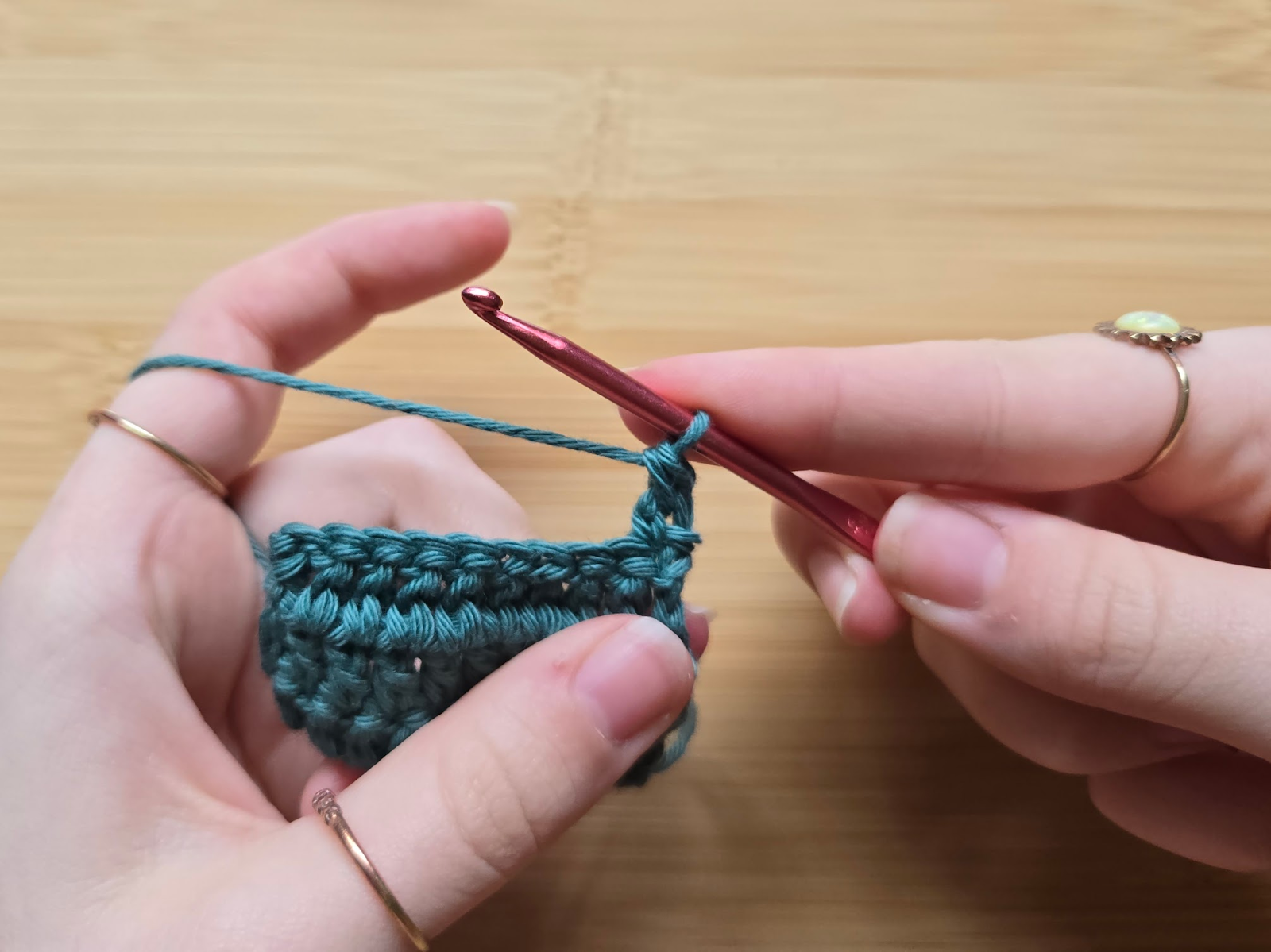
The stacked single crochet stitch is one of those subtle game-changers in the crochet world. If you’ve ever been frustrated by the gaps or uneven edges caused by traditional turning chains, the stacked single crochet is here to save the day. Not only does it create clean, seamless edges, but it also blends beautifully into your rows, making it a go-to technique for polished, professional-looking crochet.
In this tutorial, we’ll guide you through what the stacked single crochet is, how to work it step-by-step, and how to incorporate it into your projects for cleaner finishes and improved structure.
The stacked single crochet (sometimes abbreviated as stsc or referred to as a “stacked stitch”) is a technique used in place of the traditional chain-2 or chain-3 turning chain at the beginning of a row when working taller stitches like double or treble crochet.
Rather than chaining up to reach the height of a new row, the stacked single crochet uses two stacked single crochet stitches in the same stitch, creating a column that mirrors the look and height of a double crochet. The result is a solid, gap-free edge that improves both the function and appearance of your crochet projects.
There are several reasons why many crocheters are switching to this technique:
Whether you're making a blanket, garment, or accessories, the stacked single crochet can elevate the entire look of your piece.
To get started, you’ll need the following:
Begin with a row of stitches, such as half double crochet or double crochet, according to your pattern. Again, I am using my square from my How To Do a Double Crochet tutorial.

At the end of your row, turn your work to begin the next row. Instead of making a traditional turning chain, insert your hook into the first stitch of the row, yarn over, and pull up a loop. Yarn over again and pull through both loops on the hook to complete a single crochet.


Look at the single crochet you just made. Insert your hook in between the two vertical posts of the stitch.

Yarn over, pull up a loop, yarn over again, and pull through both loops on the hook. This creates a stacked effect that mimics the height of a double crochet.


Proceed with your row as usual, treating the stacked single crochet as the first stitch of the row. For me this is continuing on with double crochet. You can tell how straight stacked single crochet makes the edges on the left side! As always, blocking your work will also provide you with the straightest edges possible.


The stitch is straightforward once you get the hang of it, but here are a few pro tips to ensure success:
This technique shines when used in any project where clean edges or visible stitch consistency matter:
You can use the stacked single crochet for:
Yes and no. The stacked single crochet doesn’t replace regular double crochets, but it replaces the chain-2 or chain-3 turning chain used at the beginning of a row. It mimics a double crochet in height and structure.
While it works best for replacing double crochets, some crocheters stack three single crochets for taller stitches like treble crochet. However, the technique becomes less smooth with additional height.
Absolutely! The stacked single crochet is excellent for rounds where you’d typically start with a standing double crochet or a chain-3. It gives you a neater, more invisible join.
The stacked single crochet is a powerful little technique that can make a big impact on your finished crochet projects. Whether you’re creating a cozy blanket, a wearable garment, or a delicate motif, this stitch helps you create clean edges, even rows, and a more refined overall look.
By learning how to work stacked stitches confidently, you’ll add polish and structure to your designs—and take one more step toward crochet mastery. Once you try stacked single crochet, you may never want to go back!
Looking for more crochet tips and tutorials? Follow the quick links below for other beginner stitches or head straight to the full techniques page of my website!
Patterns that utilize the stacked single crochet stitch
Diamond Cat Sweater Crochet Pattern